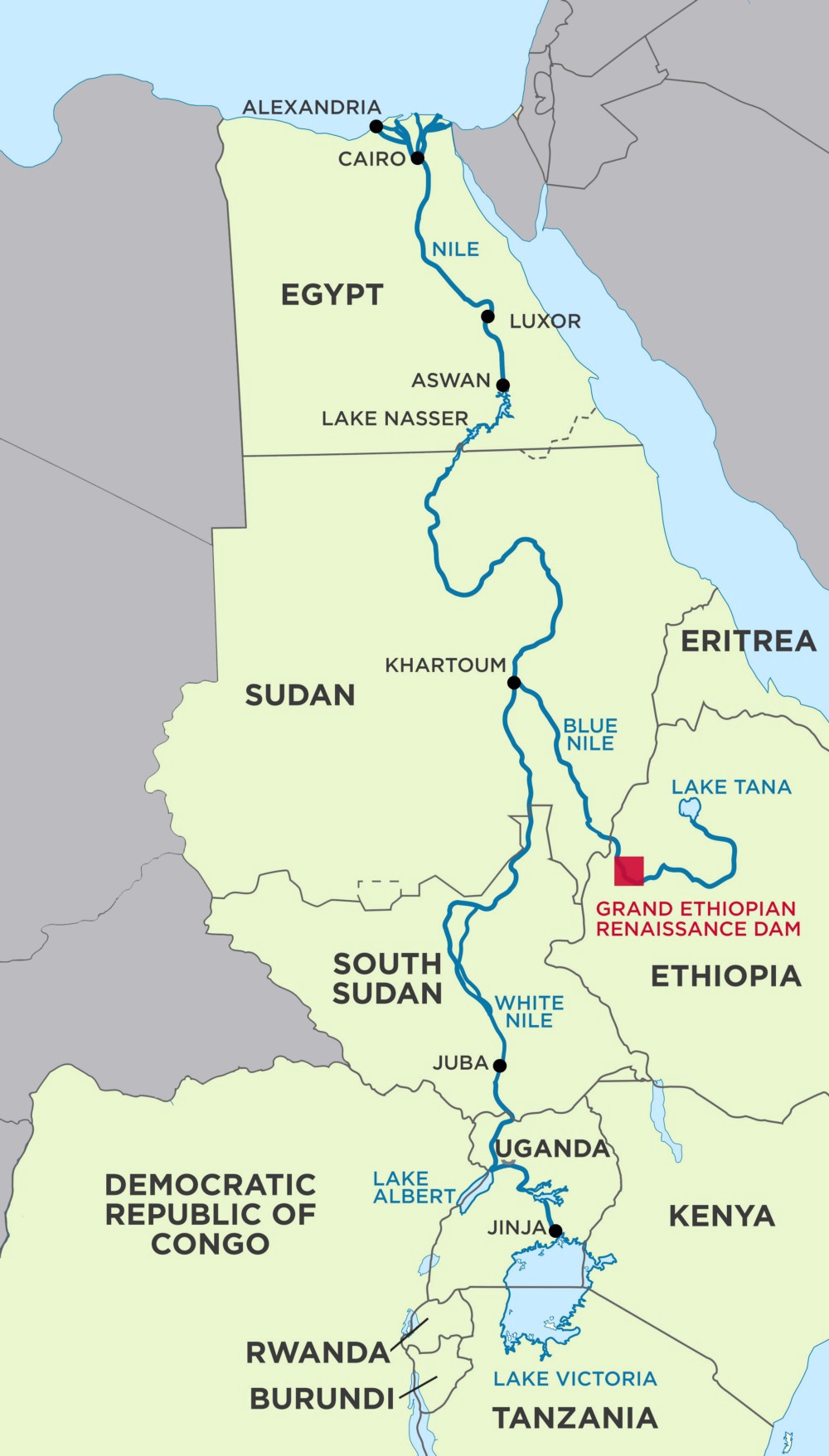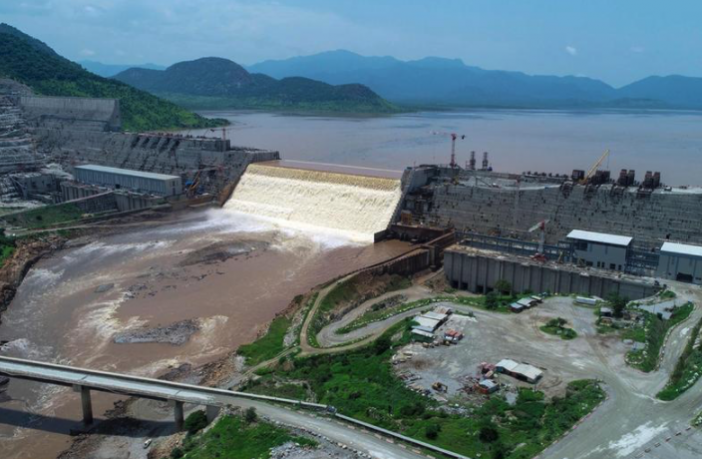- Talks between Ethiopia, Egypt, and Sudan over Ethiopia’s 6450MW Grand Renaissance Hydro Dam project ended on Tuesday in Addis Ababa in a worrying stale mate.
- Egypt and Sudan lie downstream from the huge dam constructed by Ethiopia on the Blue Nile and are concerned about water security.
- In September, after almost a decade of talks and mediation which included the UN and AU, Egypt and Ethiopia agreed to conclude “a mutually acceptable agreement” within four months but this has now failed.
Egypt’s Ministry of Water Resources and Irrigation said the talks were unsuccessful due to Ethiopia’s “persistent refusal” to accept any compromise. The Ethiopian Foreign Ministry accused Egypt of putting up “roadblocks” in the discussions that prevented any consensus.
The Blue Nile meets the White Nile in the Sudanese capital, Khartoum, and then flows onwards through Egypt. Ethiopia announced in September 2023 that the filling the dam is complete. The massive dam is home to Africa’s biggest hydro project at 6450MW when fully commissioned.

Map indicating Blue Nile and location of the Grand Renaissance Dam. Credit: GBA
Egypt has referred to Ethiopia’s dam as an existential threat as the Arab world’s most populous country relies almost entirely on the Nile to supply water for agriculture and its more than 100 million people. They are worried that Ethiopia has the power to throttle supply and want a lasting agreement in place that will ensure their water security downstream.
Ethiopia has said it will continue to exploit the river with or without an agreement.
Related news: Plans for a dam across the nile triggered a war in 1956. Will it happen again?
Author: Bryan Groenendaal















